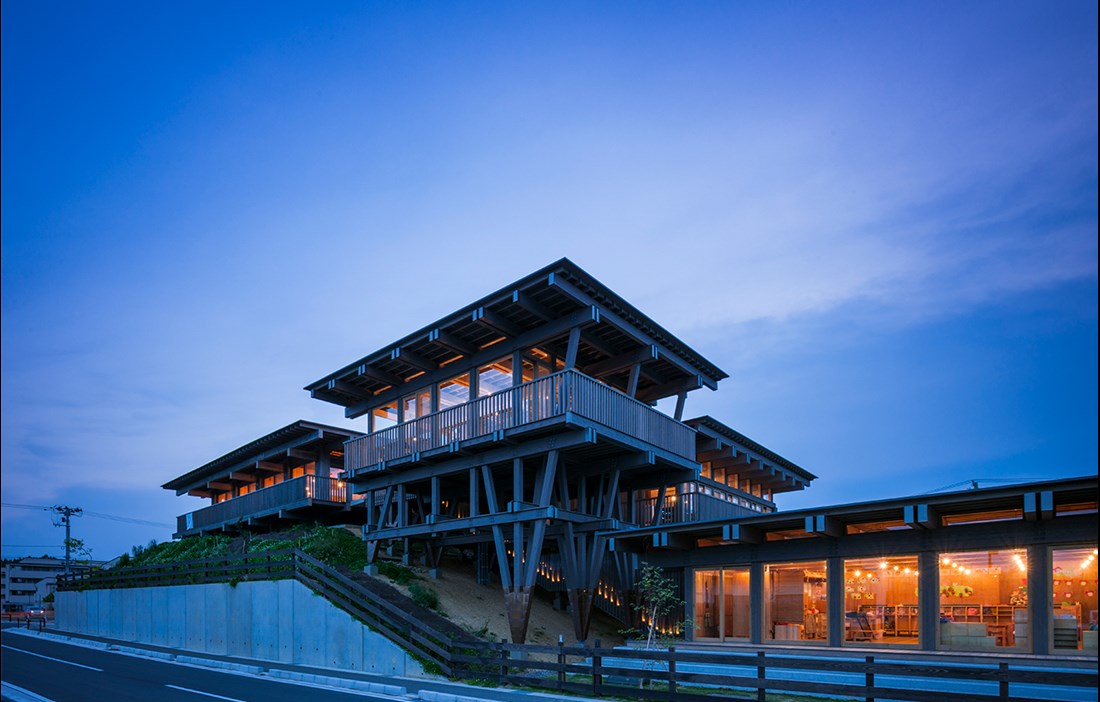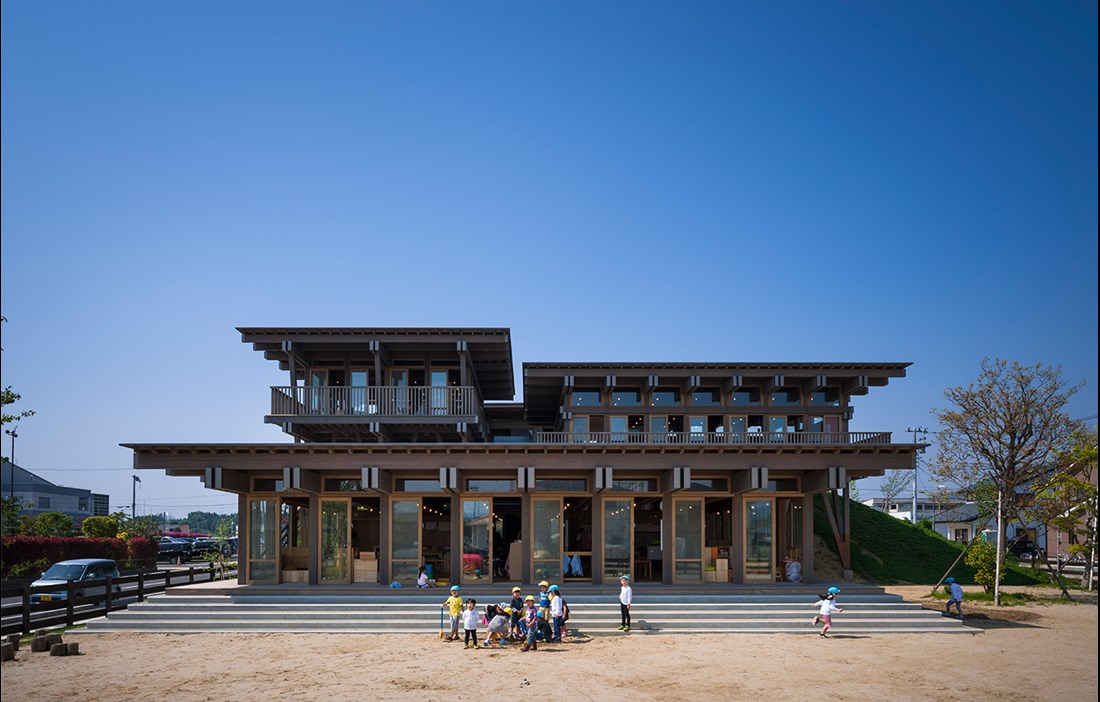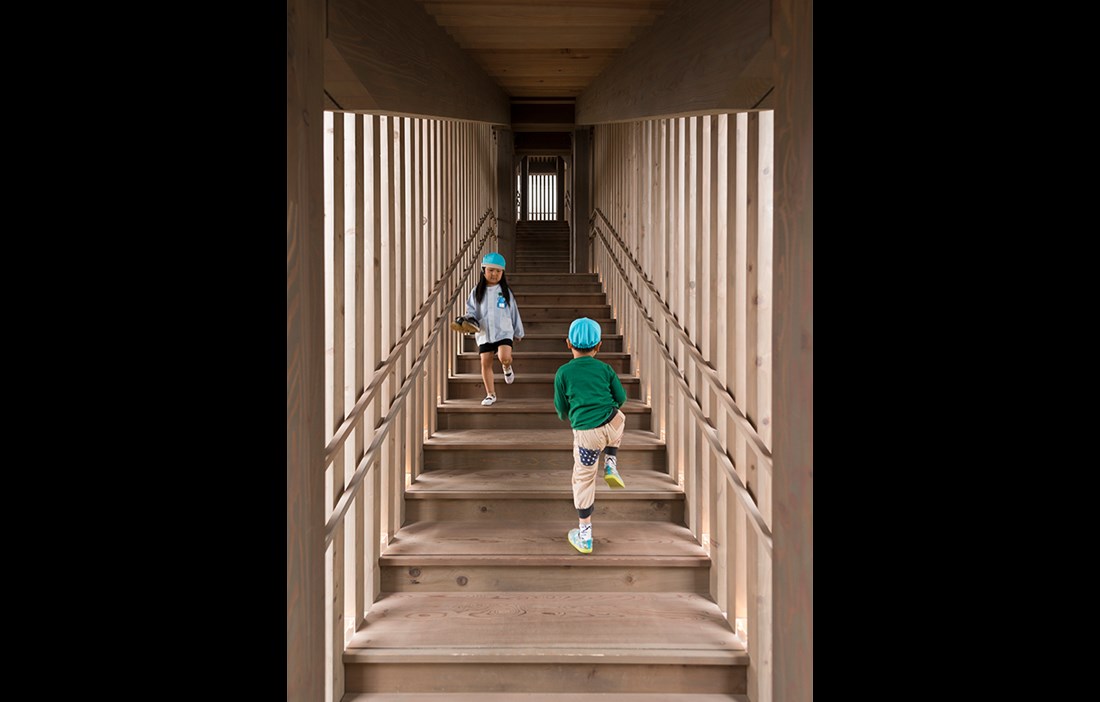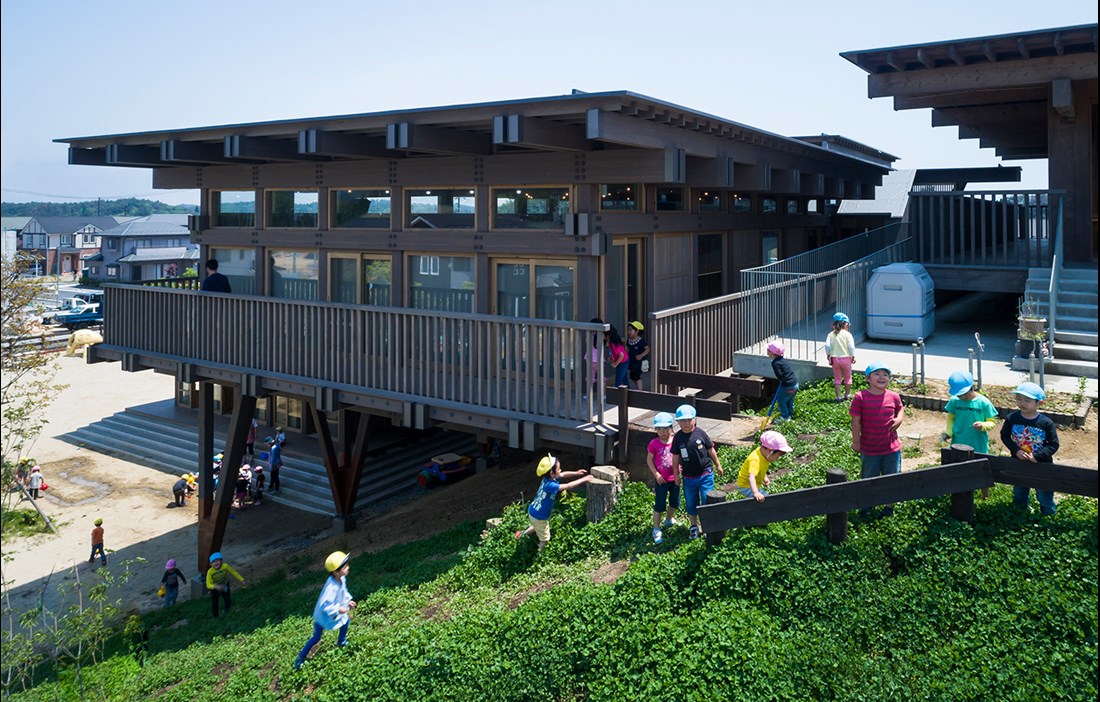On Friday, 11 March 2011, a major earthquake occurred in the sea off north-eastern Japan, 400 km north of Tokyo. Shortly after, a tsunami struck the coast, causing widespread destruction in towns and villages, with many fatalities and countless buildings in ruins.
In the small community of Minamisanriku it was afternoon when the devastating wave came. When it withdrew, at least 9,500 residents were missing. And the children at Asahi Kindergarten no longer had a place to go, as the whole building had been swept away.
In response to a plea from the local areas worst hit by the tsunami, Unicef in Japan decided to pay for 15 new kindergartens as replacements for those demolished in the north of the country.
The task of replacing Asahi Kindergarten went to Tokyo-based Tezuka Architects, which is headed by married couple Takaharu and Yui Tezuka. Their previous projects include several striking buildings in wood.
“The great thing about wood is that you can work on it on site, which you can’t do with either steel or concrete. Working with wood is basically more enjoyable, more life-affirming,” explains Takaharu Tezuka.
“What’s more, children like wood. They often run their hand along walls of wood, which they never do with concrete.”
The first phase of the new kindergarten in Minamisanriku was opened one sunny July day in 2012. By then it had been moved further back from the coast, to a high-lying area of detached homes, neighbouring a well preserved 600-year-old Buddhist temple and far beyond the reach of future tsunamis.
At the request of the school’s headteacher, the temple is the source of materials for the kindergarten’s structural frame. The 400-year-old cedar trees – many with a circumference of over 5 metres – that lined the road up to the temple were severely damaged by saltwater during the tsunami. So they were felled, dried and converted into building material.
The drying technique used, which involved drilling a hole in the middle of the tree so it could dry from the inside out, avoided the need to wait 10 years to begin construction.
“The trees were planted after an earlier tsunami in 1611 and are potent religious symbols for the community’s residents. Every little part of the kindergarten – load-bearing beams, joists, floors, handrails – has been taken from these trees,” explains Takaharu Tezuka.
The building, which arose out of the Tezuka couple’s love of wood, draws clear influences from traditional Japanese temples and old building techniques, with projecting roofs, large sliding windows and wide verandas. It is incredibly airy, with the sturdy cedar beams clearly visible in the roof, flooring and floor structure.
Built on an incline, the building juts out over the children’s playground. But there are only a few toys to be found there. Instead the children are free to make their own discoveries, with plenty of hiding places among bushes and mounds, trees to climb and soil to dig in. Perhaps most popular are the large areas that open up under the building, with the floor timbers of sea-drenched cedar overhead transformed into a roof.
“It’s not a playground tailored to children – it’s more of a training arena for the real world. I remember myself how much fun it was to play among untamed nature when I was little,” says Takaharu Tezuka.
The whole building rests on cedar posts that in turn stand on plinths of steel and concrete, buried and anchored deep in the ground. However, Takaharu Tezuka gives assurances that everything above ground is wood.
For the actual structure, they have drawn many ideas from traditional Japanese building methods, using techniques that have survived for 1300 years.
The entire building process has been like putting together a giant jigsaw puzzle, with many different pieces that have to be joined to each other. They chose not to use steel fixings, primarily because they allow less flexibility to handle movements in the wood.
“There is still moisture in there, so the wood might well be quite active over the next few years. That’s why we’re going to come back regularly to adjust all the plugs and wedges that are holding the beams in place.”
Internally, the spaces are large, flexible and play-friendly. Broad steps encourage exciting games. There were no fixed, load-bearing walls in the kindergarten. The beams have therefore been extended by joining many different pieces of timber, using tried-and-tested old techniques. The rooms can easily be adapted for different purposes.
A massive column of cedar wood measuring 600 x 600 mm is meant to reflect the way the tree once grew up out of the ground, before being killed off by the tsunami. The message to the children, who in the future are likely to experience their own tsunami, is therefore to run up to the building when there is an earthquake.
Four years after the inauguration the first phase, Takaharu and Yui Tezuka returned to Minamisanriku to complete the second phase of Asahi. This was a much bigger task, because many families had returned to the area, with children who needed a place at the kindergarten.
There were also no large cedar trees left to use as a building material. Instead they opted to use glulam and other engineered wood products for the load-bearing parts of the structure, but otherwise they were faithful to their original vision, using ancient techniques and tried-and-tested methods to join together beams and joists.
Three new buildings have been built, all with broad eaves and a long, winding staircase to join them together, giving the whole site an appearance reminiscent of the nearby Daijouji temple. Alive, comforting and welcoming.
“In European architecture, you want to overcome nature by shutting it out. In Japan, we want the opposite, to bring nature back into the space. It’s about a lifestyle, whatever the building’s purpose.”
























